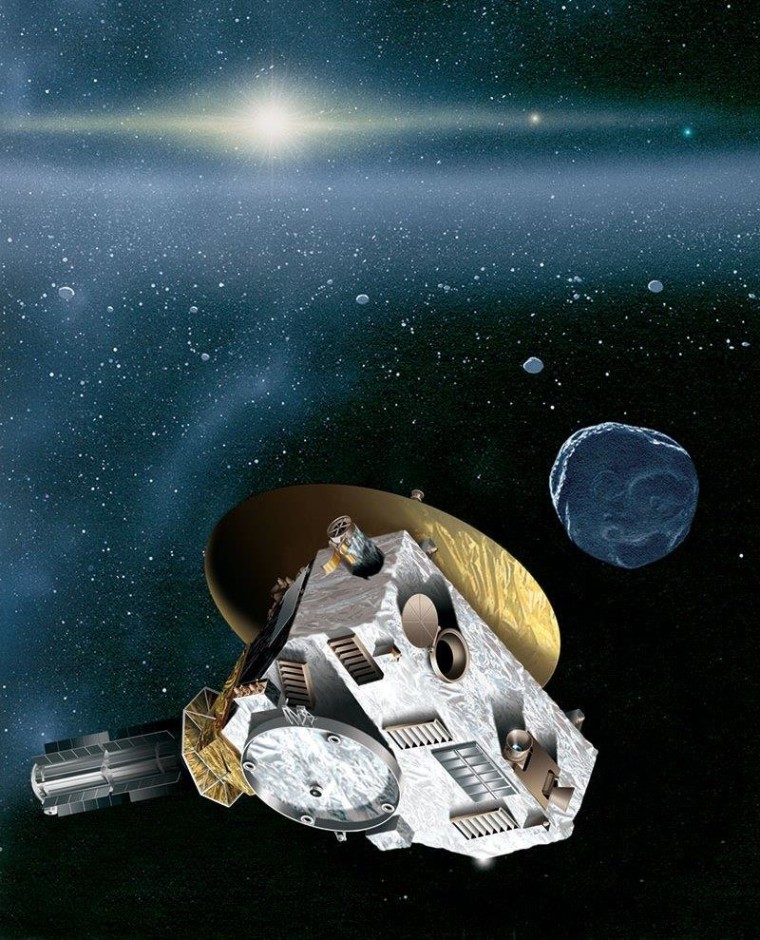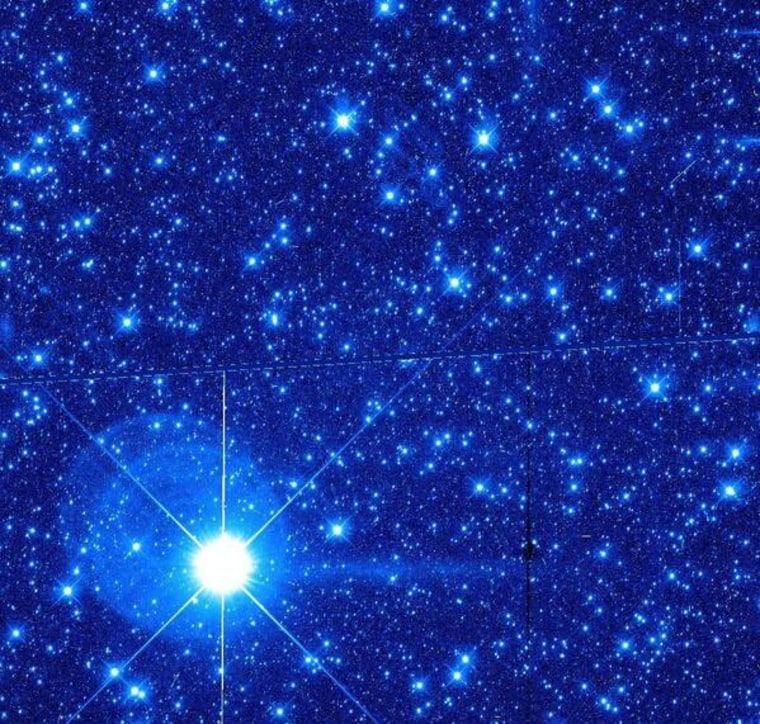The Hubble Space Telescope has begun looking for icy worlds beyond Pluto as part of a fast-moving campaign to double the scientific payoff from NASA's New Horizons mission.
New Horizons' primary goal is to send a spacecraft flying past Pluto and its moons in July 2015, more than nine years after it was launched. It's the first mission designed to study a broad belt of icy material on the solar system's rim known as the Kuiper Belt.
Sign up for Science news delivered to your inbox

When the $728 million mission was proposed, the New Horizons team said they intended to study another Kuiper Belt object after the Pluto flyby. But so far, scientists haven't been able to find a suitable object — so they asked the team in charge of allocating observing time on the Earth-orbiting Hubble Space Telescope to help out.
New Horizons' principal investigator, Alan Stern, told NBC News that the request was approved late last week, and the search began on Sunday night — even before the Space Telescope Science Institute issued a news release about the decision.
"Hubble is coming to the rescue of the exploration of the Kuiper Belt," Stern said in an email. "We're very excited!"
First, Hubble is spending 40 of its valuable orbits to see if it can spot at least two faint Kuiper Belt objects, or KBOs. If that test pans out, Stern said another 160 orbits or so would be used for a more thorough survey of the region of sky around where New Horizons is going — an area that takes up roughly the angular size of the full moon in the constellation Sagittarius.

The task is challenging: Hubble's scientists say it would be a "needle-in-haystack search" for objects typically as dark as charcoal and no bigger than Manhattan Island, orbiting 3 billion miles (5 billion kilometers) away. Sagittarius is particularly tricky because the background stars are thick in that part of the sky. "It really is kind of a fishing trip," Hubble spokesman Ray Villard told NBC News.
Nevertheless, Stern is optimistic.
"From the total of 200 orbits, we have a 95 percent chance of finding one or more targetable KBOs," Stern said. "We follow that, or those, and then burn the engine in the fall [of 2015] after the Pluto flyby."
If a suitable target is found, Stern estimated that the encounter would take place "between 2016 and 2021, most likely farther out." Despite Pluto's reclassification as a dwarf planet by the International Astronomical Union in 2006, and even though the flyby is still more than a year away, interest in the New Horizons mission is rising fast — in part because it represents the first mission to a little-understood planetary frontier.
On Sunday, the piano-sized spacecraft woke up from hibernation for a months-long checkup. Right now it's 2.7 billion miles (4.3 billion kilometers) from Earth, and roughly 290 million miles (470 million kilometers) from Pluto.